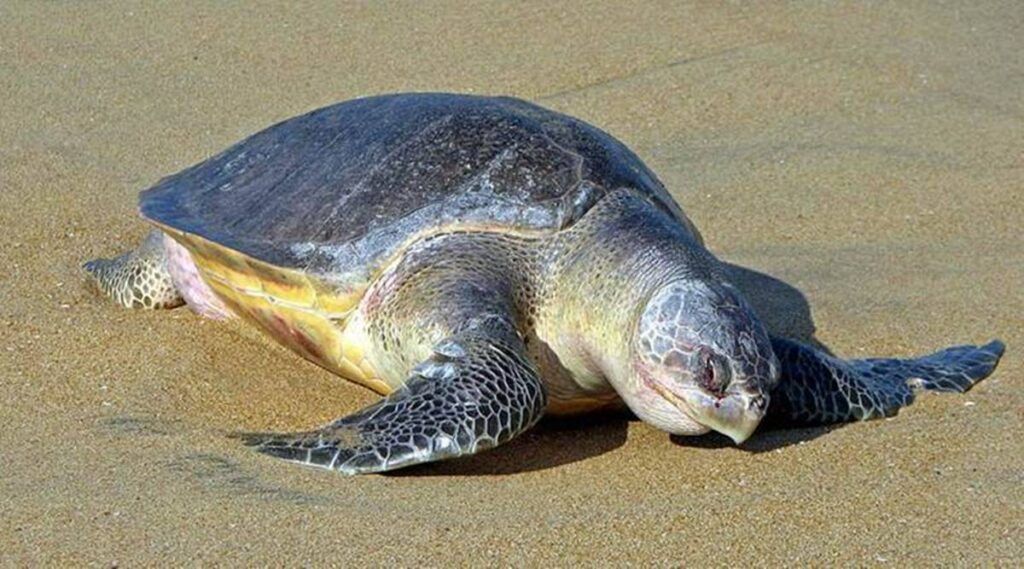Why Mangrove Foundation Launched an App??
The Mangrove Foundation, an autonomous society under the Maharashtra forest department’s mangrove cell, launched M-Turtle on Tuesday to help streamline data collection on Olive Ridley turtle nesting patterns in Ratnagiri, Sindhudurg, and Raigad districts, where they are known to lay eggs between December and March.
The app was developed in partnership with Sahyadri Nisarga Mitra, a Chiplun-based NGO that has been working on sea turtle conservation in Maharashtra with the Mangrove Foundation and is the first organization in the state to initiate a sea turtle conservation program in Ratnagiri’s Vela’s hamlet.
About 55 qualified nest managers will use the app to conduct daily patrols along the coast to detect Olive Ridley turtle nests and transport the eggs to hatcheries, where they will be carefully housed until the hatching season in April and May when the hatchlings will be released into the ocean.

“We collect a lot of data during this procedure, including the number of nesting sites, nests, and eggs; monitoring turtle track marks on the beach; hatchling success rate; and hatchling survival rate.” Manually doing this takes a lot of time and work, and there have been problems in the past owing to inconsistent data. With the M-Turtle app, we don’t have to make any extra effort, and all of the data we need as researchers are available in the cloud, said Harshal Karve, a marine biologist with the Mangrove Foundation.
The Mangrove Foundation commissioned M-Turtle in early 2020, and it has been in beta testing for the past month to fix bugs and respond to questions from nest managers. Our nest managers in Raigad and Ratnagiri have already offered favorable comments on the app. On Wednesday, we’ll be doing a training workshop in Sindhudurg. Because the nest managers deal with a lot of data, it might be time-consuming for them to jot down everything by hand and then enter it into a computer, “Kare explained.
The Mangrove Foundation intends to expand the M-Turtle app’s capability in the future. The foundation, for example, is considering providing thermometers to all nest managers and requesting that they record the temperatures of Olive Ridley turtle nests as well as the sand around the nesting site. “This is crucial in identifying the gender of the hatchlings.” “The data will not be flawless, but it will provide us with a basic baseline for future studies, and it will be reflected in real-time on the app,” Karve explained.
Only ten Olive Ridley turtle nests have been detected in Maharashtra during the nesting season, including one at Araavi beach in Sindhudurg district, a previously unknown nesting spot. According to officials, the Mangrove Foundation has launched community awareness campaigns and is currently on the lookout for further Olive Ridley turtle nests in the area. While Maharashtra has four kinds of sea turtles, Olive Ridley turtles are the only ones that nest in the state and have the most widespread population. Their populations have been dropping globally, and the IUCN Red List of Threatened Species has designated them as “vulnerable.”
In comparison to 2020, the number of turtle nesting sites along Maharashtra’s coast had doubled by 2021. During nesting season, field investigations revealed a total of 451 nesting sites, up from 288 during the same period last year. In fact, over the last six years, evidence shows a considerable increase in the number of nesting locations. Only 75 nests were documented in each of these three districts in 2017. Year after year, that figure has risen steadily.






